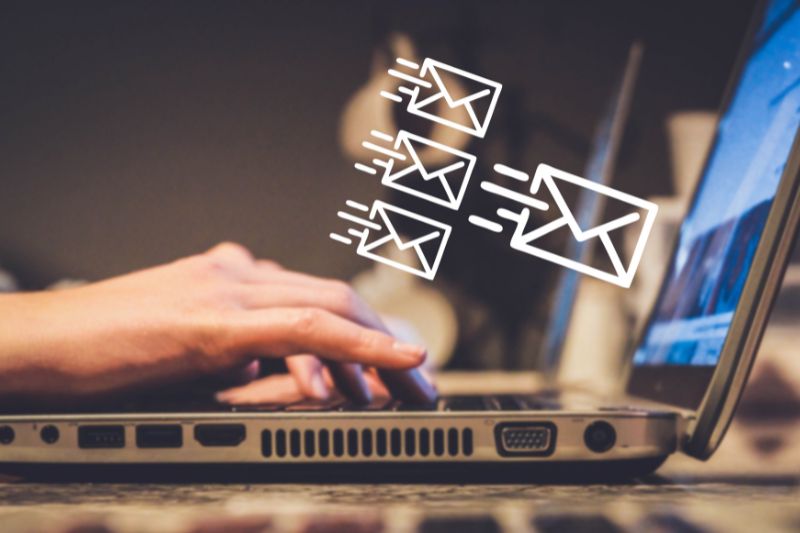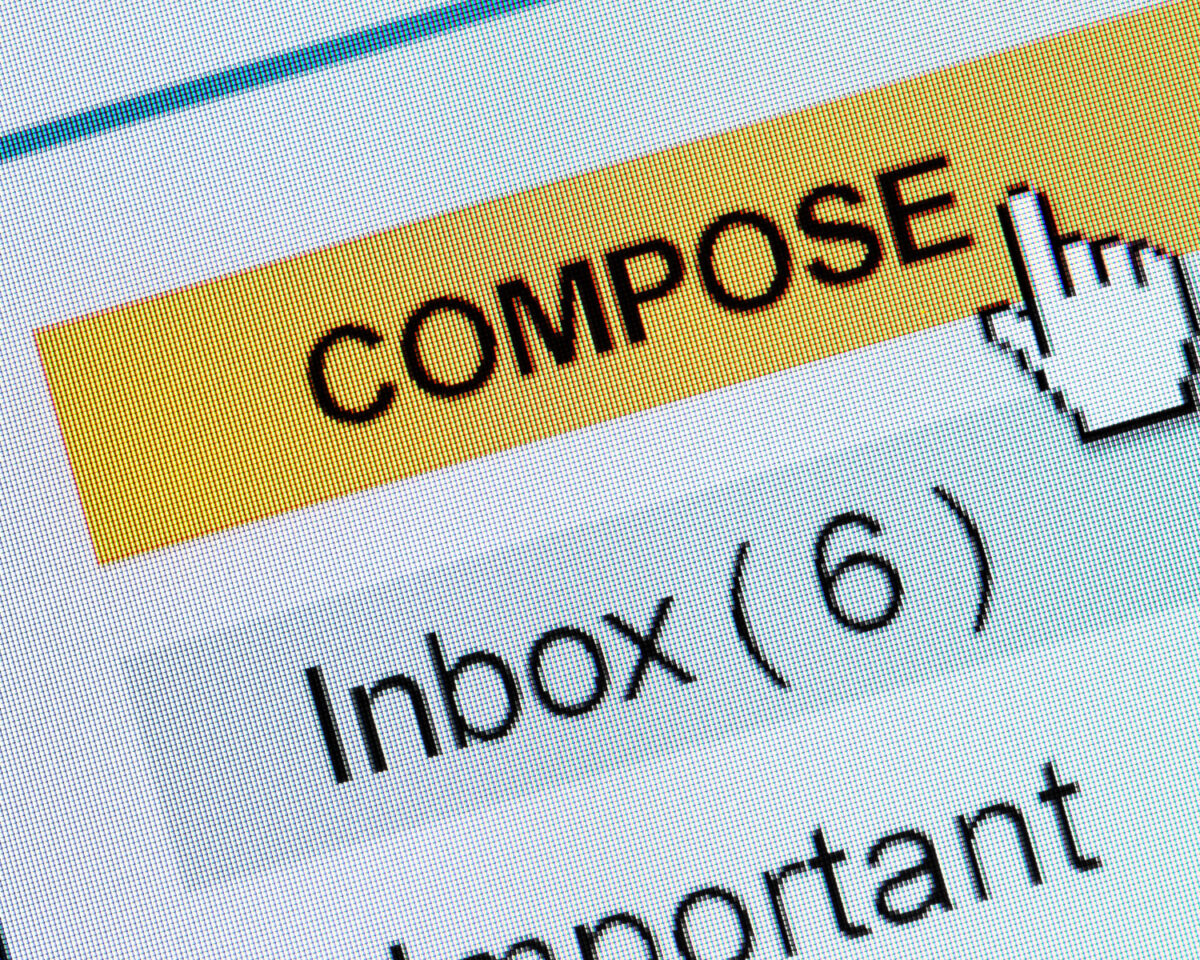Poor email deliverability can be costly for businesses. And we’re talking about more than just the actual spend in email campaigns, but also the lost opportunity. So, in this post, we’ll teach you how to improve and maintain your email deliverability.
Communication going wrong can lead to a negative brand reputation, which can spiral down to a decrease in revenue. Every penny spent to acquire new subscribers or customers can also add up.
So, if you are not learning from your mistakes, you may throw good money after bad.
All these are scary stuff enough for email marketers to think twice. However, things are more bleak than you may think.
Before we look at these tips, let’s take a short detour and understand email deliverability.
Email Delivery vs. Email Deliverability: What’s the Difference?
Email delivery and email deliverability may sound similar, but they refer to two different things:
Email delivery is the process that happens between sending your email and the time it pops into your recipient’s inbox. In other words, it’s all about inbox placement and speed.
On the other hand, email deliverability goes beyond speed delivery. Instead, it focuses on inbox placement. It also refers to where your email lands when the server receives it. Did it land in the spam folder or the inbox? These are your concerns about deliverability.
You may have good email delivery but still need better email deliverability when the email lands in the spam folder instead of the inbox.
But here’s the good news: excellent email deliverability tools, like InboxAlly, are available for email marketers. These tools can help them optimize email campaigns and increase deliverability, conversion, and open rates.
Parties involved in email deliverability
Here are the three parties involved to get your emails to reach their inbox:
- Senders – These include businesses or legitimate email senders and, sadly, even spammers.
- Gateways or Email Service Providers – These organizations control whether emails get delivered. They also have major internet service providers, B2B anti-spam systems, blacklisting organizations, and minor ISPs.
- Recipients – Lastly, these people receive the emails and are protected from spammers.
What Affects Email Deliverability?
Source: Devonyu/ iStock Photo
Many factors affect email deliverability. These factors determine whether an email is filtered, blocked, or delivered into a subfolder (like the spam folder). Let’s explore the three key factors that impact email deliverability:
Technical aspect
This aspect is where you’ll focus on what email protocols (i.e., IMAP, POP3, SMTP) you use in your email campaigns. Are your campaigns adequately signed with the correct IP and domain?
Email content
Your email content itself affects your email deliverability. Responsive newsletter templates, pleasing designs, and good content can also break your deliverability. Are there spam trigger words in your content or email subject line?
Pssst. If you want to build up your email marketing knowledge, be sure to see our Top 30 Email Marketing Blogs and read tips from experts in the field of email marketing!
Sender reputation
Sender reputation impacts how an ISP will treat your email. So, how have your previous email campaigns performed? Has your IP or domain behaved dubiously in the past? If you’re using a dedicated IP, is it properly “warmed up” before sending many emails?
But our campaigns “always” land in the inbox. Does deliverability still concern us?
Yes. But first of all, congratulations! It’s incredible how deliverability works for your campaigns. It still concerns you because a few mistakes can drain all your previous hard work and resources.
What you can focus more on instead is how to maintain and monitor that excellent email deliverability.
Now, let’s discuss these best email deliverability practices, shall we?
8 Best Email Deliverability Practices

1. Build a clean email list
Believe it or not, your email list hygiene matters as much as the content you send. That is why building a clean email list is one of the best email deliverability practices you can do.
This involves cleaning out cold or inactive email subscribers from future email marketing campaigns and focusing more on your remaining list.
Effects of having a clean email list
Once your list is clean, you will only be sent to people who genuinely need and want your message. Eventually, this practice prevents you from receiving spam complaints.
Some inactive emails in your list may even be spam traps you must filter. Spam traps (also referred to as honeypots) are email addresses that are actively monitored but not actively used.
Moreover, the ESPs recognize that these email addresses are out of use. However, when an email still comes through, it gives them the idea that the addresses were unlawfully obtained (either purchased or scraped). Then, receivers may mark that sender as spam on that platform.
Another good reason to remove inactive email addresses is that they can hurt your email engagement rates. As a result, it impacts your overall deliverability and links to your sender reputation with the ESPs.
2. Maintain a good sender score
After cleaning inactive email addresses, the next step is to assess your email sender score. Think of it as your credit score as an email marketer. It also indicates your trustworthiness and will help pinpoint which part of your email marketing campaigns need to strengthen first.
The sender score is crucial because mail servers often check it before determining what to do with your campaigns. The higher your score, the easier it is to get into someone’s inbox.
Some factors to consider when evaluating your sender’s reputation include:
- Your sending volume trends
- Quality of your email content
- Quality of the list to whom a specific IP address is sending emails
- Level of engagement that receivers show for your emails
A critical takeaway from this topic is that it’s about something other than getting the job right but getting it right the first time. A dedicated email marketing service, like InboxAlly, can ensure you a good sender reputation.

3. Send first to your most engaged subscribers
Sending your marketing emails to inactive email addresses or non-existing users will only damage your credibility and ramp up your bounce rate. Your bounce rate is the percentage of email addresses in your list that did not receive your email as the mail server returned it.
Therefore, you need more people to open, read, and click your emails to boost your email deliverability. And the recipients who are more likely to engage in your emails have repeatedly done so.
As such, it makes sense to send your campaigns first to these users aside from your other segmented list.
4. Deliver on your promise
Some marketers treat their customers or clients as if they are on an assembly line. They move them along, serve them, take their money, and make way for the next customer.
They also reel them with flashy marketing plans and advertising, leaving them less satisfied with the overall experience.
A business or email campaign may succeed in the short term. Still, it would help if you did things right to keep subscribers or customers from returning. And by “right,” we mean keeping what you promised during their sign-up or what you say in your subject lines.
As an email sender, use clear words in your opt-in forms to avoid upsetting your list with unwanted emails.
5. Handle IP address issues
Another step to improve and maintain your email deliverability is to warm up your new IP addresses. Start sending with small volumes and slowly increase the volume of emails each week or day based on the set schedule.
Imagine sending tens of thousands of emails and your first email in one go. This email marketing action may suggest you are a spammer, so it better not do it.
Dedicated IP vs shared IP address for emails
However, will it matter whether you use a dedicated or a shared IP for your emails? Well, the answer is it depends. When you’re using a dedicated IP, it means you are fully responsible, including the consequences if you make mistakes.
Meanwhile, note that you may be affected by the IP reputation built by other senders within the same address when using a shared IP.
Therefore, take care of your other technical settings, such as setting up your Sender Policy Framework (SPF) and Domain Keys Identified Mail (DKIM). SPF works as a verification system to prevent spammers from sending emails on behalf of your domain.
In contrast, DKIM encrypts your signature with a unique key that only the message’s recipient can decrypt.

6. Determine your sending frequency
Next in our email deliverability best practices list is determining your sending frequency. If you’re sending emails every day, stricter rules will be applied to you by the ISPs.
So, you have to find that delicate balance between bombarding your recipients with emails to the point that they unsubscribe and infrequent email communications that they may forget you.
Email A/B testing
In addition, you can choose a list segment (make it your sample size but enough to provide you with meaningful data) and do A/B testing there. This is when you can experiment with creative new subject lines, create a new template, or test an unknown sender in your “From” field.
Aside from knowing the right sending frequency, it would be best to put your emails in your subscribers’ inboxes at the right time (when they are most active) to improve sales conversions.
Once you find the right sending frequency, deliver value consistently until your subscribers look forward to receiving your messages.
Need help with email deliverability? There’s nothing like seeing our software work in action. Book a Live Demo today and know how it can work for your business.
7. Make your unsubscribe link visible
Did you know that 43% of email users mark emails as spam simply because they can’t unsubscribe? If this happens to your campaigns, it will impact your email deliverability.
To handle this issue, make your unsubscribe link visible so recipients can easily manage their preferences. There are various ways to do this.
How to implement an unsubscribe link in your emails
First, include a link in every email where recipients can update their information. Second, give your subscribers the choice that will help them remain on the list instead of unsubscribing.
For instance, they can decide whether to receive emails weekly instead of daily or opt out of some categories. If you’re sending promotional emails, you can include this line, “Select the shopping departments you want to hear about.”
We also couldn’t emphasize enough the importance of having a visible unsubscribe link. You can add this in your email footer. What matters is that you don’t hide the link; it just takes one simple click to complete the process.
8. Check email deliverability using seed email accounts
Finally, the most straightforward way to improve your email deliverability is to use a seed list to test your email deliverability.
What is a seed list?
A seed list records test email addresses created to monitor where emails will land when sent. The list may include email addresses of different ESPs, like Gmail, AOL, Yahoo, and other internet service providers.
However, you should not use it to warm up a new IP address. These accounts will not show engagement but test inbox placement.
During tests, you discovered some of your emails were in a spam folder. In that case, we recommend you watch out for misleading subject lines, spammy words in the preview text and subject lines, and poorly formatted emails.
Improve Your Email Marketing Experience Today!

Following the email deliverability tips above should significantly increase your email marketing metrics and KPIs. You no longer have to accept poor email deliverability.
Plus, you can access compelling email marketing tools and analytics to help you build a stronger brand and foster better customer relationships.
Check out our Top 30 Email Marketing Blogs at InboxAlly for more in-depth email deliverability tips.
